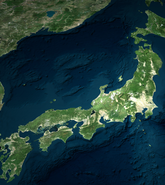LONDON – MAY 25, 2023 – Moody’s RMS®, the leading global catastrophe risk modeling and solutions company, is announcing that risk models from Applied Research Associates, Inc. (ARA), Fathom, and JBA Risk Management (JBA) are all to be made available as a technology preview on the Intelligent Risk Platform™ (IRP), following the integration of the IRP into the Nasdaq (Nasdaq: NDAQ) Risk Modelling for Catastrophes (NRMC) service.
This announcement builds on an earlier Moody’s RMS announcement on enhancing the IRP by integrating the NRMC service for Oasis Loss Modelling Framework-based risk models.
When the solution is fully developed, and subject to the necessary agreements being put in place between Moody's RMS and its partners for the integration, customers who subscribe to the solution will be able to use Moody’s RMS Intelligent Risk Platform applications such as Risk Modeler™, UnderwriteIQ™, and TreatyIQ™ for unified execution of Moody’s RMS models, as well as ARA, Fathom, and JBA Risk Management models, running on the Nasdaq modeling service based on the Oasis Loss Modelling Framework (LMF), and other custom models and modeling engines.
George Freimarck, Business Leader for Catastrophe Models at ARA, said: “North Atlantic hurricane remains the single largest region-peril risk for most property insurers. The ability to directly incorporate and blend results from multiple credible hurricane models on a single platform will help clients understand and manage that risk. The integration of ARA models into the IRP opens a wide range of options and possibilities for risk professionals and clients while removing burdensome technology integration.”
Dr. Andrew Smith, Co-Founder, and Chief Operations Officer at Fathom, said: “We welcome the ecosystem innovation that Moody’s RMS, working with Nasdaq, is bringing to the risk market, model users, and modelers. We believe it will be incredibly attractive for customers to access multiple views of risk through the same interface, so we were excited when Moody’s RMS approached Fathom to help test the modeling engine’s capabilities and for our flood model to become one of the first to be integrated into the IRP."
"The standardizing and simplifying of multi-vendor exposure and results data offers greater flexibility and efficiencies for risk professionals. All model users, and all those transacting in risk, will gain from friction-free model interoperability and unification of risk standards that this will deliver.”
Jane Toothill, Managing Director at JBA Risk Management, said: “We are excited to see the integration of Moody’s IRP into Nasdaq’s NRMC as it means our suite of global flood models will be more easily accessible to mutual clients. The ability to run multiple models on the same platform will provide many benefits to the insurance and risk industries."
"Greater modeling flexibility, improved efficiencies, and streamlined costs of ownership will all make significant differences, and by helping clients build reliance and promote mitigation measures, insurers can better prepare themselves and their clients against potentially catastrophic events.”
Cihan Biyikoglu, Executive Vice President - Product, at Moody’s RMS, said: “With this initiative, we are hoping to create more opportunities for innovation in the global risk market, and we are delighted to be working with ARA, Fathom, and JBA. Moody’s RMS recognizes that customers often want to incorporate multiple models for a multitude of reasons, including hedging model risk and creating their own view of risk for a differentiated risk strategy."
"We are making this much easier for our clients by allowing them to consolidate their modeling systems into a single unified experience and limiting the burden of complex data conversion between different exposure and loss data formats."
"This will help them to free up IT budgets dedicated to maintaining multiple modeling environments, as well as allowing their catastrophe modelers better insights for risk selection, pricing, and transfer decisions. We are also working with additional model vendors and look forward to further announcements as this initiative continues to accelerate.”
To learn more about third-party modeling on the Moody’s RMS Intelligent Risk Platform, please visit rms.com.
END
About Moody’s RMS
Moody’s RMS shapes the world’s view of risk for insurers, reinsurers, financial services organizations, and the public sector, with Moody’s RMS models underlying the nearly $2 trillion USD Property and Casualty industry. Moody’s RMS empowers organizations to evaluate and manage global risk from natural and man-made catastrophes, including hurricanes, earthquakes, floods, climate change, cyber, and pandemics.
Moody’s RMS helped pioneer the catastrophe risk industry and continues to lead in innovation, unmatched science, technology, and 300+ catastrophe risk models. Organizations can address the risks of tomorrow with the Intelligent Risk Platform™, the only open cloud with collaborative applications and unified analytics that can power risk management excellence.
Further supporting the industry’s transition to modern risk management, in 2020, Moody’s RMS spearheaded the Risk Data Open Standard (RDOS), a modern, open-standard data schema designed to be an extensible and flexible asset within modeling/analysis systems.
In 2021, Moody’s Corporation acquired Risk Management Solutions, Inc. and as part of Moody’s Analytics, Moody’s RMS serves the P&C insurance industry as the leading provider of expertise, science, and technology in integrated risk. A trusted solutions partner, Moody’s RMS enables effective risk management for better business decision-making across risk identification and selection, mitigation, underwriting, and portfolio management.
Visit RMS.com to learn more and follow us on LinkedIn and Twitter.
©2023 Risk Management Solutions, Inc. and/or its affiliates and licensors (“Moody’s RMS”). All rights reserved. All names, logos, and icons identifying Moody’s RMS and/or its products and services are trademarks of Risk Management Solutions, Inc. and/or its licensors or affiliates. Third-party trademarks referenced herein are the property of their respective owners.
Risk Management Solutions, Inc. is a subsidiary of Moody’s Corporation (NYSE: MCO) and operates as part of the Moody’s Analytics business segment. Moody’s Analytics is operationally and legally separate from the Moody’s Investors Service credit rating agency.
About ARA
Applied Research Associates, Inc. (ARA) was founded in 1979, in Albuquerque, New Mexico, to offer science and engineering research to solve problems of national importance. ARA delivers leading-edge products and innovative solutions for national defense, energy, homeland security, aerospace, healthcare, transportation, manufacturing, and insurance.
ARA’s wind engineering expertise and its state-of-the-art hurricane model, HurLoss®, provide an independent and highly respected view of hurricane risk to structural engineers, emergency managers, energy producers, and property insurers. With over 1,700 employee-owners at locations in the U.S. and Canada, ARA offers a broad range of technical expertise in defense technologies, civil engineering, computer software and simulation, systems analysis, biomedical engineering, environmental technologies, and blast testing and measurement.
For more information, visit https://ara.com
About Fathom
Fathom gives risk management professionals the most scientifically robust tools and intelligence for understanding the climate’s impact on water risk. By publishing cutting-edge, peer-reviewed academic research and applying it to real-world challenges, Fathom powers better decision-making for (re)insurance, financial markets, corporate risk, civil engineering, disaster response, and government.
Fathom’s dedicated team of scientists harness their passion for innovation and the environment to develop rigorous catastrophe models and comprehensive mapping and geospatial data that make a real-world difference to customers and communities worldwide.
For more information visit https://www.fathom.global
About JBA Risk Management
JBA Risk Management is the global leader in flood risk science. Offering best-in-class flood maps, models, analytics, and consultancy services to help users understand flood risk today and in the future, JBA works with some of the world’s largest organizations in the insurance and financial sectors, including mortgage providers, property search companies, governments, the international banking community, and NGOs.
With a collaborative team of expert scientists, hydrologists, mathematicians, and engineers, JBA uses pioneering science to stay at the forefront of flood modeling innovation. Headquartered in the U.K. with offices in Asia Pacific, the U.S. and Europe, JBA Risk Management is part of the JBA Group, which was founded in 1995.
For more information, visit https://jbarisk.com






